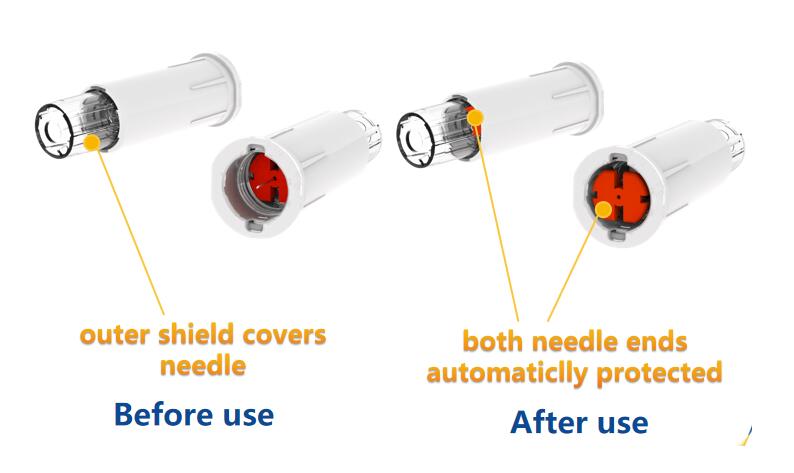
NSI is one of the most common health hazards in the healthcare setting (Costigliola et al., 2012). Pen needles are often implicated in the risk of sharps injury, as they are used widely by patients self-administering injections for medical treatments, as well as by healthcare workers giving subcutaneous injections to patients (Lee et al., 2005; Smallwood, 2017). Pen needles with automatic protective safety features allow patients who are temporarily incompetent to continue self-administering drugs with assistance but without compromising HCP safety (Markkanen et al., 2015). Moreover, SPN have been found to minimise the risk of exposure to blood borne infections, associated with NSI, without any related adverse events (Gillespie and Canning, 2014; Yakushiji et al., 2012). It was shown that HCP usually stick themselves in conjunction with insulin injections, which are mainly given in nursing homes, old age homes and in home care, suggesting that the devices used for that purpose should be improved (Vos et al., 2006). In the case of needled safety devices, lack of activation of safety feature, only partial activation and inability to tell whether safety feature malfunctioned were reported (Lee et al., 2005).

Safety Pen Needles help to prevent accidental needle sticks after injections: results of a simulated clinical studyDropSafe

1) Clinicians
When considering dose preparation and administration, 77% of nurses were confident in dose accuracy with a safety pen needle & insulin pen over an insulin syringe.8
With an unobstructed needle viewing window, priming confirmation and injection site administration are clearly visible with SPN.
2) Patients
When a safety pen needle was used in the hospital and patients continued to use insulin pens with a pen needle at home, the will likely continue to be adherent, leading to a reduction of in-hospital costs.8 Patient satisfaction improved by 498% when able to continue taking insulin at home with the use of a pen needle versus a syringe.
References
Maffettone A, Rinaldi M, Ussano L, Fontanella A (2016) Insulin therapy in the hospital setting: a time for a change? Ital J Med 10:23–28.
Davis EM, Foral PA, Dull RB, Smith AN (2013) Review of Insulin Therapy and Pen Use in Hospitalized Patients. Hosp Pharm 48:396–405.
Pellissier G, Miguéres B, Tarantola A, Abiteboul D, Lolom I, Bouvet E, GERES Group (2006) Risk of needlestick injuries by injection pens. J Hosp Infect 63:60–64.